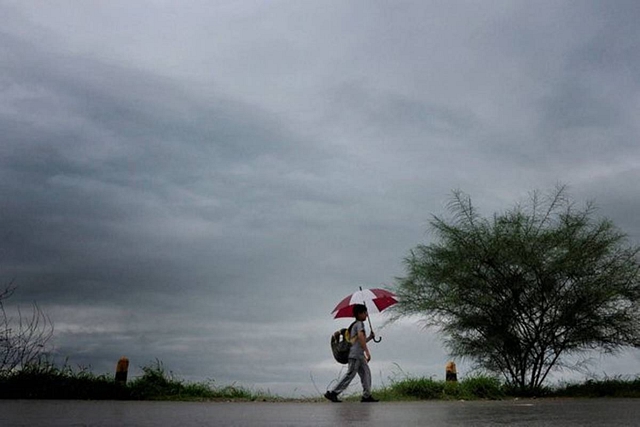
India Likely To Witness Normal Rainfall During Monsoon Season This Year: IMD
New Delhi, Apr 14 (PTI) India is likely to witness normal rainfall during the southwest monsoon season this year with favourable La Nina conditions predicted to continue during the June-September period, the India Meteorological Department said on Thursday.
The country had received normal rainfall during the four-month southwest monsoon season in 2019, 2020 and 2021.
The rainfall during the southwest monsoon season in 2022 will be 96 per cent to 104 per cent of the Long Period Average (LPA) of 87 cm of the 1971-2020 period, the IMD said.
Earlier, the IMD used to consider the LPA of 88 cm of the 1961-2010 period.
Quantitatively, the June to September monsoonal rainfall is likely to be 99 per cent of the LPA with a margin error of 5 per cent, it said.
The Met office predicted that there is a 40 per cent probability of 'normal' rainfall, 15 per cent probability of 'above normal' (104 per cent to 110 per cent of LPA) and 5 per cent probability of 'excess' rainfall (more than 110 per cent of LPA).
There is a 26 per cent probability of 'below-normal' rainfall (90 per cent to 96 per cent of LPA) and a 14 per cent chance of 'deficient' rainfall (less than 90 per cent of LPA).
Normal to above-normal rainfall is most likely over many areas in the northern part of peninsular India, central India, along the foothills of the Himalayas and some parts of northwest India.
Below-normal rainfall is likely over many parts of the northeast, some parts of northwest India and southern parts of the peninsula, it said.
The IMD will issue an updated forecast for the monsoon season towards the end of May.
It said La Nina conditions over the equatorial Pacific region are likely to continue during the monsoon season.
Also, neutral Indian Ocean Dipole (IOD) conditions prevailing over the Indian Ocean are predicted to continue till the beginning of the southwest monsoon season. Thereafter, an enhanced probability of negative IOD conditions is predicted.
The El Nino-Southern Oscillation is an irregular cycle of change in wind and sea surface temperatures over the tropical eastern Pacific Ocean, affecting the climate of much of the tropics and subtropics.
The warming phase of the sea temperature is known as El Nino and the cooling phase as La Nina.
El Nino is generally known to suppress monsoon rainfall in India while La Nina increases it.
Indian Ocean Dipole, also known as Indian Nino, is an irregular oscillation of sea-surface temperature in which the western Indian Ocean becomes alternately warmer and then colder than the eastern part of the ocean.
IOD has three phases -- neutral, negative and positive.
The positive IOD phase is beneficial for the monsoon and negative IOD obstructs the progression of the monsoon over India. However, the relationship of the Indian monsoon with IOD is not as strong as compared to the relationship with El Nino.
(This story has been published from a wire agency feed without any modifications to the text. Only the headline has been changed.)